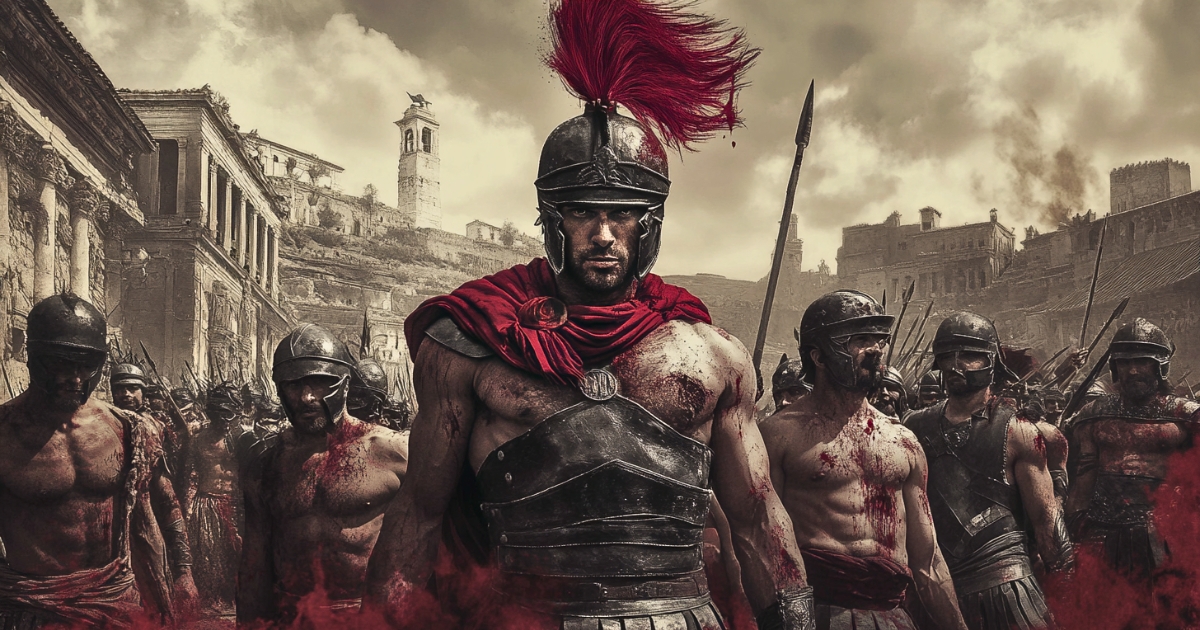In the history of ancient Rome, the rebellion led by Spartacus is known as the largest and most influential slave uprising. Occurring from 73 to 71 BCE, this rebellion was more than just a slave revolt; it became a major event that shook the foundations of the Roman Republic. This article explores how Spartacus, a single gladiator, led a rebel army that challenged Roman forces and sent shockwaves through the ancient world. We will also examine the impact this rebellion had on Roman society and subsequent history.
Spartacus’ Background and Personal Motivations
Spartacus was born around 109 BCE in the Thracian region, near present-day Bulgaria. He had experience serving as an auxiliary in the Roman army. However, for reasons unknown, he was enslaved and eventually sent to a gladiatorial school in Capua.
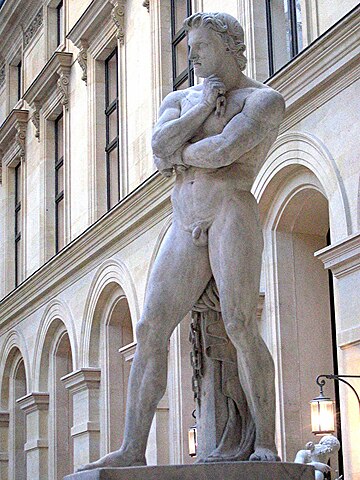
Statue of Spartacus by Denis Foyatier, housed in the Louvre Museum. This 19th-century sculpture powerfully depicts Spartacus, the leader of the slave rebellion, with a muscular physique and thoughtful expression symbolizing his physical strength and intellectual leadership. CC BY-SA 3.0, Link
Spartacus is said to have had a wife who also participated in the rebellion. Legend has it that she was a priestess of Dionysus and prophesied to Spartacus. This personal aspect suggests that Spartacus’ rebellion was driven not just by political and social motives, but also by a human desire for freedom and dignity.
The training as a gladiator was unimaginably brutal. Gladiators were subjected to strict discipline and intense physical conditioning, preparing for life-and-death battles. They mastered swordsmanship, hand-to-hand combat, and various weapons, also learning to enthrall audiences with spectacular fighting techniques. Spartacus underwent this harsh training and eventually became renowned as an exceptional gladiator.
The Beginning and Spread of Spartacus’ Rebellion
In 73 BCE, Spartacus and his fellow gladiators initiated their rebellion. Using kitchen utensils like knives and skewers as weapons, about 70 of them successfully escaped from the gladiatorial school. This bold action inspired great hope among the slaves.
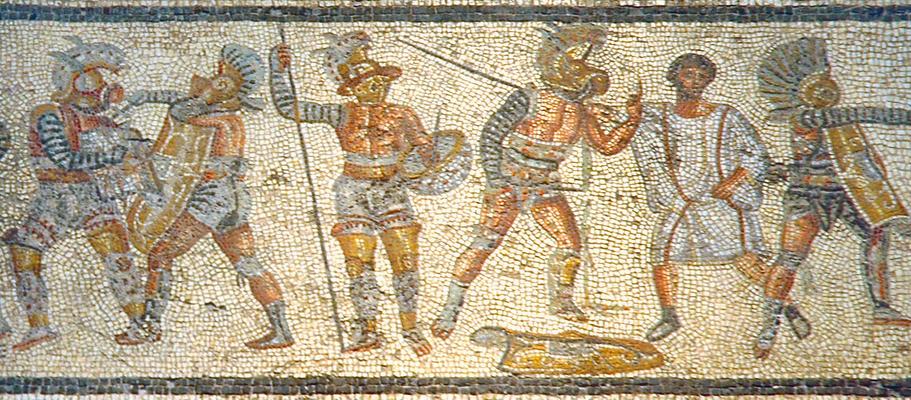
Gladiators depicted in an ancient Roman mosaic discovered in Zliten, Libya. Spartacus would have been forced to engage in similar battles.
However, this rebellion wasn’t limited to slaves and gladiators. Spartacus’ movement spread to include Rome’s poor and peasant classes. This reflected the widespread discontent and social unrest in Roman society at the time. Many people resonated with Spartacus’ ideals of freedom and equality, joining the rebel army.
After their escape, Spartacus and his followers took refuge on nearby Mount Vesuvius. This strategically advantageous position was a key factor in their initial success. By utilizing the mountain’s rugged terrain, the outnumbered rebel army effectively repelled Roman attacks.
Strategies and Tactics of Spartacus’ Army
Spartacus’ military talent was evident not only in his combat skills but also in his organizational abilities and tactical innovations. He effectively trained slaves from diverse backgrounds, transforming them into a disciplined army. The rebel forces used not only swords and spears captured from Roman soldiers but also weapons fashioned from agricultural tools like sickles and plows.
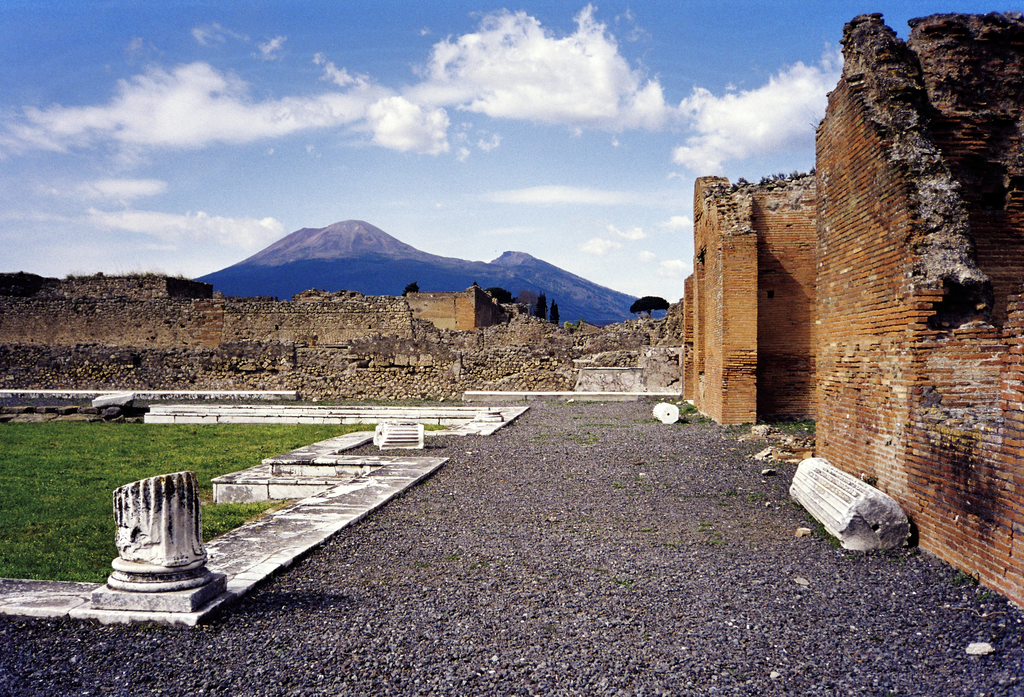
Modern view of Mount Vesuvius. Spartacus used the mountain’s rugged terrain to secure his initial victories. Morn the Gorn, CC BY-SA 3.0
Spartacus’ tactics skillfully combined guerrilla warfare with conventional battles. His development of guerrilla tactics is believed to have been based on several factors:
- Terrain Utilization: Spartacus cleverly used the rugged terrain of Mount Vesuvius and the Apennine Mountains. This limited the mobility of the numerically superior Roman forces, allowing his smaller units to fight effectively.
- Speed and Mobility: The rebel army, lightly equipped compared to the heavily armed Roman forces, excelled in rapid movement and surprise attacks.
- Information Warfare: Spartacus skillfully utilized intelligence from local farmers and slaves to predict and counter Roman movements.
- Psychological Warfare: To demoralize Roman troops, Spartacus sometimes resorted to brutal tactics. However, he also showed flexibility by recruiting volunteers from among prisoners to join his army.
Spartacus’ army differed from other rebel forces in several ways:
- Discipline and Organization: Spartacus implemented strict discipline, prohibiting looting and disorderly conduct. This enabled his force to function as an organized army rather than a mere mob.
- Strategic Thinking: Spartacus didn’t just avoid battles; he strategically captured important strongholds and secured resources, indicating long-term planning.
- Adaptability: The rebels learned from and adopted Roman tactics and equipment. They not only used captured weapons effectively but also reportedly learned tactics from Roman prisoners.
Modern military strategists highly regard Spartacus’ tactics. His flexible strategy and ability to exploit enemy weaknesses are seen as precursors to modern guerrilla warfare. The adaptability and creativity Spartacus demonstrated continue to influence studies of asymmetric warfare today.
The Threat of Rebellion from Rome’s Perspective
Spartacus’ rebellion posed a serious threat to Rome. As the uprising expanded, Rome invested enormous resources in suppression efforts. Initially, local militia were dispatched, but after being repelled by Spartacus’ forces, regular army units were deployed.
Eventually, Marcus Licinius Crassus, a prominent Roman politician, led a large army to suppress Spartacus. Crassus is said to have used his personal wealth to raise eight legions (about 40,000 troops), a significant portion of Rome’s military strength at the time. Crassus took drastic measures, severely punishing rebel captives and deserters, and even implementing decimation (killing one in ten soldiers) to boost his troops’ morale.
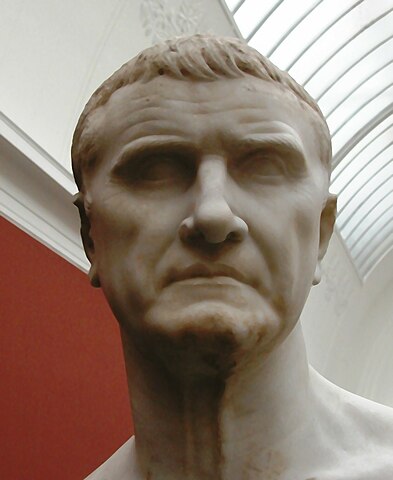
Bust of Marcus Licinius Crassus. He invested his personal wealth and led a large army to suppress Spartacus’ rebellion. By Diagram Lajard
Additionally, renowned generals like Pompey and Lucullus were mobilized. Pompey returned to Italy after completing his mission in the Iberian Peninsula and joined Crassus in eliminating the remaining rebel forces. These facts demonstrate how seriously Rome viewed the threat posed by Spartacus’ rebellion.
From Rome’s perspective, Spartacus’ rebellion was not merely a slave revolt but a severe crisis threatening the very existence of the Republic. The rebels’ victories and expansion exposed vulnerabilities in Roman rule and risked spreading to other provinces and dependent territories.
The End of the Rebellion and Its Impact
However, Spartacus’ rebellion ultimately succumbed to Rome’s overwhelming military might. In 71 BCE, Spartacus’ army suffered a crushing defeat in a decisive battle against Roman forces led by Crassus. Spartacus himself is believed to have died in this battle.
After the rebellion’s suppression, Rome took harsh retaliatory measures. About 6,000 surviving rebels were crucified along the Appian Way. This gruesome spectacle demonstrated Rome’s resolute stance against slave rebellions.
Nevertheless, Spartacus’ rebellion profoundly impacted Roman society. It exposed vulnerabilities in the Roman slave system, leading to a reassessment of slave policies. Rome became more cautious in its treatment of slaves, and in some cases, it even spurred land reforms.
The rebellion also influenced Roman military tactics and organization, highlighting the need for more mobile units. Spartacus’ revolt became a catalyst for the evolution of Roman military strategy.
The Legend of Spartacus and His Influence on Later Generations
Spartacus’ story has been passed down through generations, serving as a symbol of the fight for freedom and justice, and greatly influencing later eras. Ancient Roman historians like Plutarch and Appian recorded Spartacus as a brave and noble leader.
Since the modern era, Spartacus’ story has been reinterpreted in various forms, becoming a subject of literature and art. For instance, Italian novelist Raffaello Giovagnoli’s “Spartacus” (1874) depicted him as a hero fighting for freedom, generating significant response.
In the 20th century, Spartacus became a symbol for labor movements and revolutionary causes. The German communists Karl Liebknecht and Rosa Luxemburg named their 1918 revolutionary organization the “Spartacus League.”
In popular culture, Spartacus’ story has been repeatedly featured. Stanley Kubrick’s film “Spartacus” (1960) was produced with messages of freedom and democracy during the Cold War era in America. The TV series “Spartacus: Blood and Sand” (2010) dramatically portrayed Spartacus’ life, reintroducing his story to modern audiences.
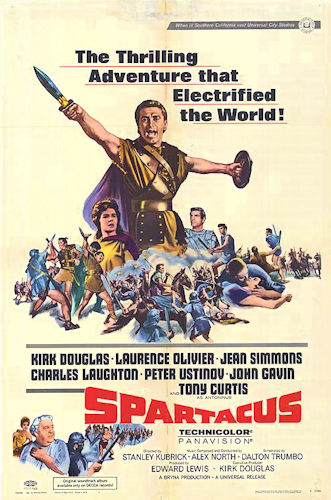
Poster for the 1960 film ‘Spartacus’. Directed by Stanley Kubrick and starring Kirk Douglas, this work revived Spartacus’ story for modern times, becoming widely recognized as a symbol of the fight for freedom and justice. By Reynold Brown
Thus, Spartacus’ story continues to resonate with people across ages. His rebellion embodies universal themes of courage in the face of injustice, the yearning for freedom, and the struggle to protect human dignity.
Conclusion
Spartacus’ rebellion stands as one of the most significant events in ancient Roman history. It was more than just a slave uprising; it fundamentally challenged the social structures and values of the time. Spartacus’ military talent and leadership gave hope to slaves and the marginalized, uniting them into a formidable force.
Although the rebellion was eventually suppressed, its impact endured. Roman society was forced to reconsider its slave system and rethink its military strategies. More importantly, Spartacus’ story has influenced subsequent generations. His struggle has become a universal symbol of the fight for freedom and equality, resonating with people to this day.
Spartacus’ rebellion teaches us how the human desire for dignity and freedom can become an immense force. It also serves as a warning about the dangerous consequences of social inequality and oppression. These lessons hold profound significance in contemporary society.
For example, recent movements like “Black Lives Matter” and global democratization efforts can be seen as manifestations of resistance against social inequality and oppression, similar to Spartacus’ rebellion. These movements can be considered modern examples of social activism influenced by Spartacus’ story.
Moreover, movements for workers’ rights and efforts to address economic disparities can be seen as carrying on Spartacus’ spirit. These movements can be interpreted as resistance against new forms of “slavery” in modern society (such as harsh labor conditions and economic exploitation).
Spartacus’ story appeals to us about the importance of courage in facing social injustice and striving for a more just and equal society. Despite being over 2000 years old, it carries a message that deeply resonates with modern society.
From Spartacus’ story, we can learn about the courage to stand up for freedom and justice, and the possibility of social change. At the same time, this story warns us about the dangers of social division and oppression. For us living in modern society, Spartacus’ rebellion is not just a historical event, but a living lesson that continues to challenge our society and way of life.
